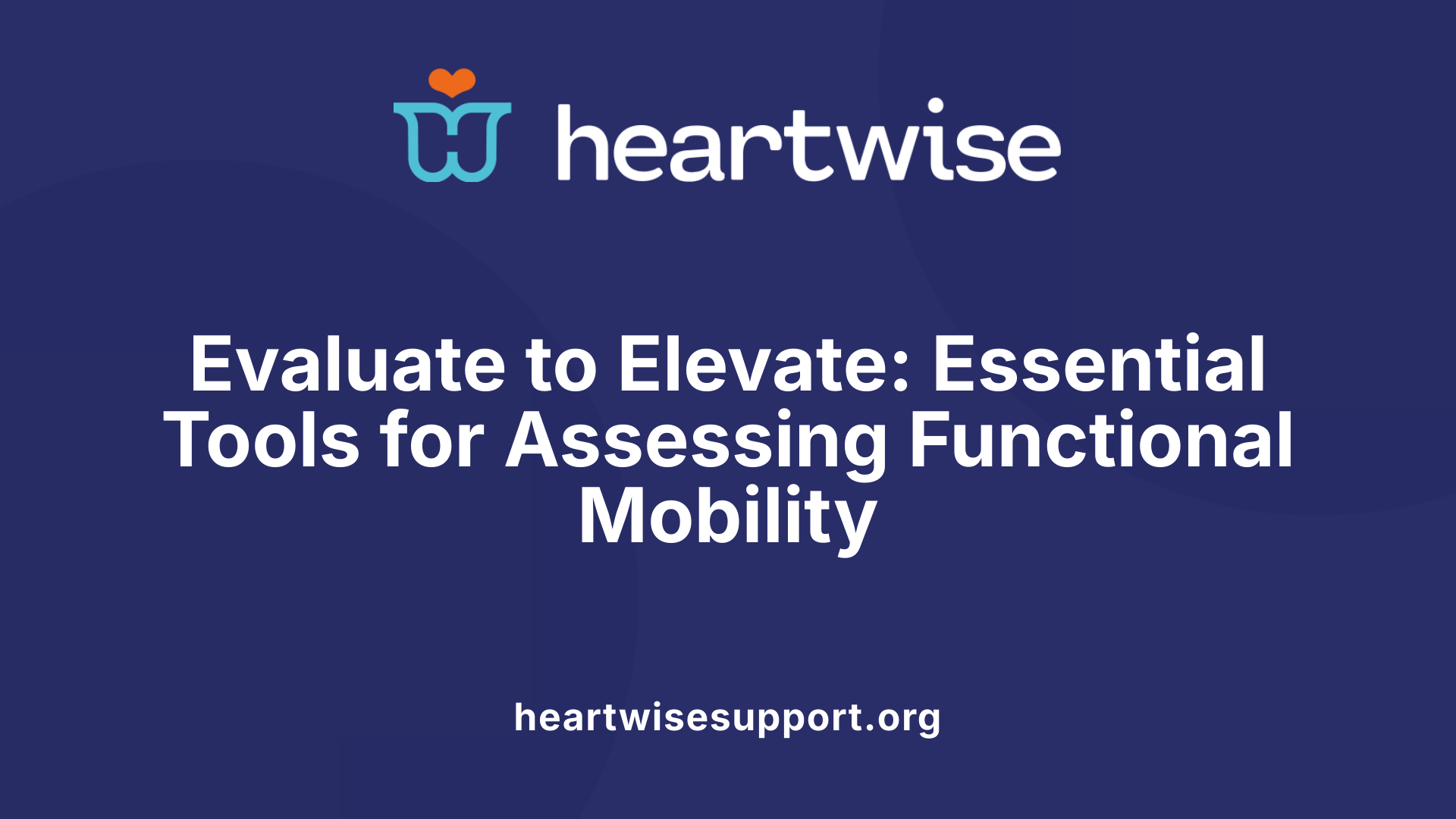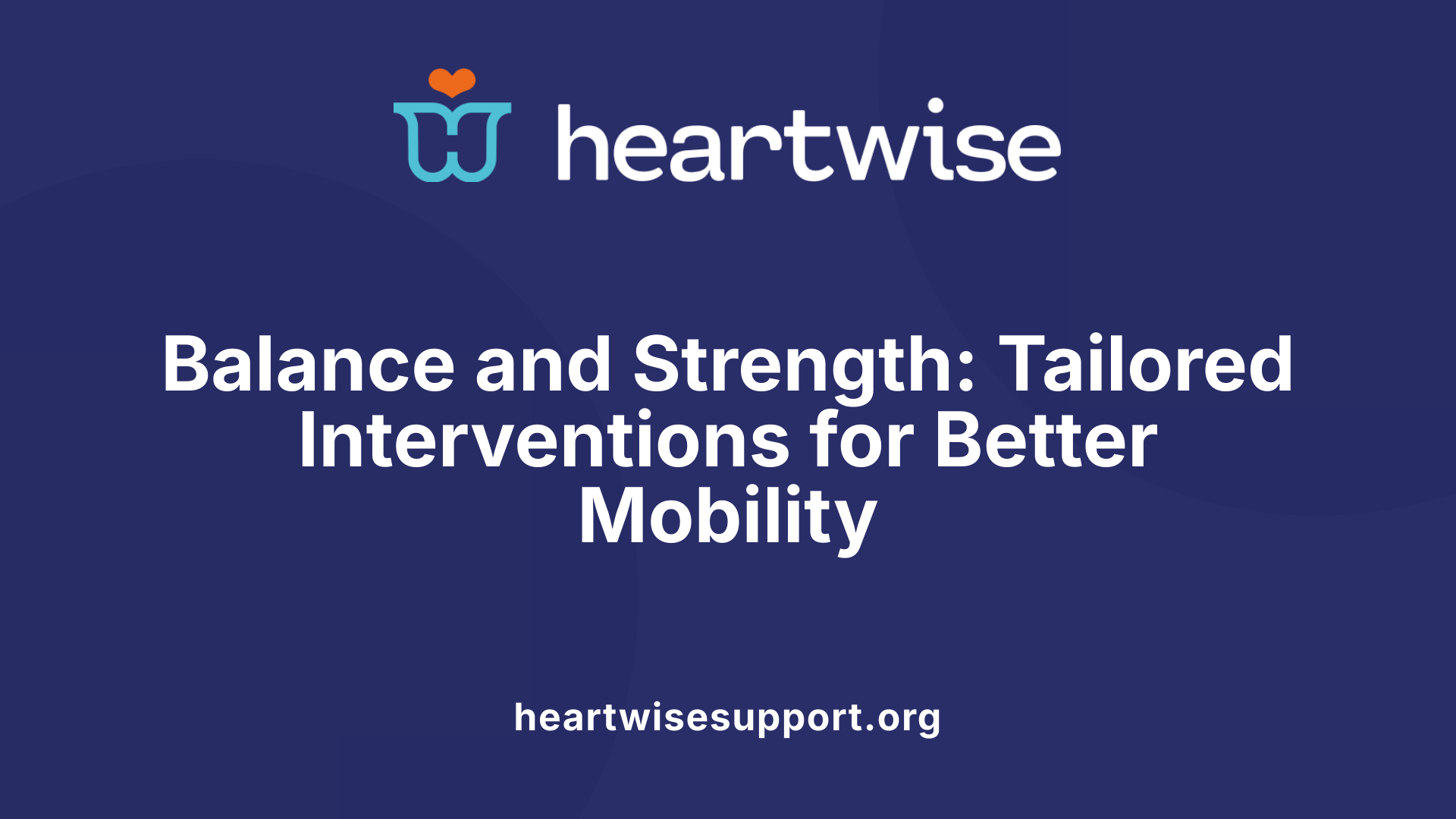Unlocking the Potential of Occupational Therapy in Functional Mobility
Occupational therapy (OT) plays a central role in improving functional mobility, which is essential for maintaining independence and enhancing quality of life. This comprehensive approach uses personalized strategies, exercises, adaptive devices, and environmental modifications to address individual mobility challenges. By focusing on meaningful daily activities, OT helps diverse populations—from seniors and children to patients in recovery—move safely and efficiently within their environments. Here, we explore the scope, techniques, assessment methods, and evidence supporting occupational therapy's vital contributions to mobility enhancement.
Scope and Objectives of Occupational Therapy in Functional Mobility

What is the role and scope of occupational therapy in improving functional mobility?
Occupational therapy (OT) plays a crucial part in enhancing a person’s ability to move safely and efficiently during daily activities. This includes comprehensive assessment of individual needs, such as evaluating strength, flexibility, balance, coordination, and mobility challenges specific to each person.
Based on these evaluations, OTs develop personalized intervention plans tailored to improve specific areas like transfers, ambulation, and object retrieval. These plans incorporate a variety of techniques and tools designed to maximize independence.
Interventions often involve targeted exercises to strengthen muscles, improve flexibility, and enhance balance and coordination. Adaptive techniques, such as task modifications, and assistive devices like walkers, canes, and wheelchairs, are frequently recommended to facilitate safe movement.
OTs also focus on creating supportive environments through modifications like installing grab bars, ramps, and non-slip mats, which significantly boost safety and accessibility in homes and public spaces.
Furthermore, occupational therapists educate clients on injury prevention, correct body mechanics, and community mobility skills, including how to navigate transportation options safely. This holistic approach aims to empower individuals, fostering confidence and independence in everyday life.
In sum, occupational therapy’s scope in improving functional mobility encompasses assessment, personalized planning, practical interventions, environmental adaptations, and educational support. These efforts collectively work toward enabling individuals to perform daily tasks efficiently and safely, thereby improving overall quality of life.
Assessing Functional Mobility: Tools and Techniques
 In occupational therapy, accurately evaluating functional mobility is essential to developing effective treatment plans. Various assessment methods help therapists understand a patient’s current abilities, identify specific deficits, and track progress over time.
In occupational therapy, accurately evaluating functional mobility is essential to developing effective treatment plans. Various assessment methods help therapists understand a patient’s current abilities, identify specific deficits, and track progress over time.
Screening and diagnostic assessments are commonly used. The Timed Up and Go (TUG) test measures how quickly a person can stand up from a chair, walk a set distance, turn around, and sit back down. It’s a quick way to evaluate balance, gait, and fall risk. The Berg Balance Scale (BBS) assesses static and dynamic balance through practical tasks, scoring the patient on their ability to maintain positions and perform movements.
The Functional Independence Measure (FIM) provides a comprehensive look at a patient’s independence in activities such as transfers, ambulation, and self-care. It evaluates physical, cognitive, and social functioning, guiding intervention planning. Similarly, gait analysis involves observing walking patterns, assessing stride, speed, and use of assistive devices.
Self-report questionnaires like the Functional Mobility Assessment (FMA) gather patient perspectives on their mobility confidence and device satisfaction. Patient interviews also offer insight into daily challenges and goals.
Performance-based measures include observing transfers between surfaces, walking distances, and stair navigation. These practical tests simulate real-world scenarios and offer valuable data.
Establishing a baseline with these tools enables therapists to tailor interventions effectively. Ongoing assessment allows for progress tracking and adjustments, ensuring that mobility improvements align with the patient’s personal goals and safety needs.
More info: Searching for "OT assessment methods for mobility evaluation" can provide additional resources and detailed protocols for implementing these assessments in clinical practice.
Interventions to Improve Mobility and Balance
 Occupational therapy incorporates a wide range of techniques and exercises aimed at enhancing mobility and maintaining balance. These interventions are carefully tailored to each individual's needs and may include straightforward balance exercises like heel-to-toe walking, one-leg stands, and side steps, which help improve stability and coordination.
Occupational therapy incorporates a wide range of techniques and exercises aimed at enhancing mobility and maintaining balance. These interventions are carefully tailored to each individual's needs and may include straightforward balance exercises like heel-to-toe walking, one-leg stands, and side steps, which help improve stability and coordination.
Strength routines are also common, such as toe and leg lifts, bridging exercises, and functional task training that mimic real-life activities. These exercises strengthen key muscle groups including the core, legs, and hips, which are vital for maintaining upright posture and safe movement.
Sensory integration strategies and postural training are used to retrain the brain’s ability to interpret sensory signals and realign the body's center of gravity. This helps reduce the risk of falls and improves overall stability.
Adaptive equipment plays a crucial role in supporting balance. Items like walkers, grab bars, and non-slip mats assist individuals in performing daily activities safely and confidently.
Environmental modifications, such as installing ramps and handrails, further enhance safety and mobility, especially for those with limited strength or balance issues.
Combining these techniques with functional task training—practicing activities such as climbing stairs or getting in and out of bed—helps individuals regain independence. Incorporating recreational activities that promote seated balance and real-life simulations can also boost confidence and improve overall mobility.
This comprehensive approach applies not only to clinical settings but also to everyday environments, empowering individuals to move safely and perform daily tasks with improved steadiness.
Specific Interventions for Bed Mobility and Reaching

What are some specific intervention ideas for improving bed mobility and functional reaching?
Occupational therapists utilize a variety of targeted exercises and strategies to enhance bed mobility and reaching abilities. Exercises like bridging, rolling from side to side, and leg slides help strengthen core muscles, increase flexibility, and improve coordination, which are essential for independent movement.
In addition, practicing supine to sit transfers and side-to-side movements directly mimics daily activities, fostering safer and more efficient movement patterns. These task-specific activities promote functional control and boost confidence.
Supportive tools can be instrumental in ensuring safety and facilitating movement. Bed rails, transfer poles, and leg lifts serve as physical aids that assist in positioning and transferring, reducing fall risk and strain.
To motivate patients, engaging activities such as reaching exercises, balloon tapping, or even virtual reality (VR) scenarios can make therapy sessions enjoyable and stimulating. These activities not only improve reaching accuracy but also promote motivation and adherence.
Interventions should always be tailored to each individual's specific limitations and recovery goals. Regular assessment of progress allows therapists to adjust exercises and tools, ensuring optimal outcomes and fostering independence in daily activities.
Incorporating a personalized mix of strengthening, task practice, adaptive equipment, and engaging activities creates a comprehensive approach that effectively addresses the multifaceted needs of patients working on bed mobility and functional reaching.
Objectives and Evidence Supporting Occupational Therapy
What are the overall objectives of occupational therapy concerning movement, stability, and safe mobility?
The primary goal of occupational therapy (OT) is to improve a person's ability to move safely and efficiently within their environment, thereby increasing independence in daily activities. OT focuses on enhancing physical capabilities such as strength, flexibility, and coordination through customized exercises and training.
Part of this objective includes advising on and modifying the environment to support safe mobility—installing grab bars, ramps, and non-slip surfaces are common examples. OT practitioners also recommend assistive devices like walkers, canes, or specialized seating to promote stability and posture.
Furthermore, OT aims to teach clients techniques and routines that facilitate safe transfers, ambulation, and community mobility tasks, such as driving or navigating public spaces. Building confidence and developing routines helps clients maintain their independence and participate actively in their community.
Overall, OT's multifaceted approach addresses both physical and environmental factors, working towards safe, effective movement, balance, and sustained participation in life roles.
Are there evidence-based practices supporting the effectiveness of occupational therapy in enhancing mobility?
Yes, diverse research and clinical guidelines support OT's role in enhancing mobility. Systematic reviews and clinical studies show that tailored OT interventions—such as strength training, balance exercises, and adaptive equipment training—positively influence clients' functional mobility.
While some areas like vision rehabilitation and simulator-based mobility training have limited or inconclusive evidence, the majority of OT practices grounded in purposeful activities and individualized assessments demonstrate significant benefits.
For example, studies indicate improvements in balance, reduction in fall risk, and greater activity tolerance after OT-led therapy programs. Tools like the Berg Balance Scale (BBS) and the Timed Up and Go (TUG) test are used to objectively measure progress.
Current guidelines endorse OT practices that integrate functional task training, environmental modifications, and client education. These interventions collectively contribute to better mobility outcomes, supporting the inclusion of occupational therapy as an effective component of rehabilitation and fall prevention programs.
| Aspect | Evidence Level | Description |
|---|---|---|
| Strength and balance exercises | Strong | Proven to improve stability and reduce falls |
| Environmental modifications | Moderate | Support mobility safety, but variable evidence |
| Vision and cognitive interventions | Limited | Inconclusive results in some areas |
| Adaptive equipment training | Strong | Enhances independence in mobility and daily activities |
| Community mobility training | Growing | Increasing evidence supports its positive impact |
Overall, occupational therapy remains a validated, evidence-based approach to improving mobility, essential for promoting independence and enhancing quality of life.
Mobilizing a Better Future through Occupational Therapy
Occupational therapy is a dynamic and evidence-based discipline committed to enhancing functional mobility across diverse populations. Through personalized assessments, innovative exercises, environmental modifications, and assistive technology, OT helps individuals regain independence, improve safety, and participate fully in everyday life. As research continues to support its effectiveness, occupational therapy remains a vital component of holistic rehabilitation and community integration. By fostering movement, stability, and confidence, OT empowers individuals to lead more autonomous and fulfilling lives.
References
- OT Functional Mobility Interventions and Goals - myotspot.com
- 5 Types of Occupational Therapy Interventions for Balance
- Simple Ways Occupational Therapy Enhances Your Mobility
- April is Occupational Therapy Month. Learn what an occupational ...
- Occupational Therapy vs Physical Therapy | UCLA Medical School
- Occupational Therapy - Parent Project Muscular Dystrophy
- Functional Reaching Exercises in PT and OT - The Note Ninjas
- Occupational Therapy: Helping You Live Life to the Fullest
- Mastering Functional Mobility in Occupational Therapy











